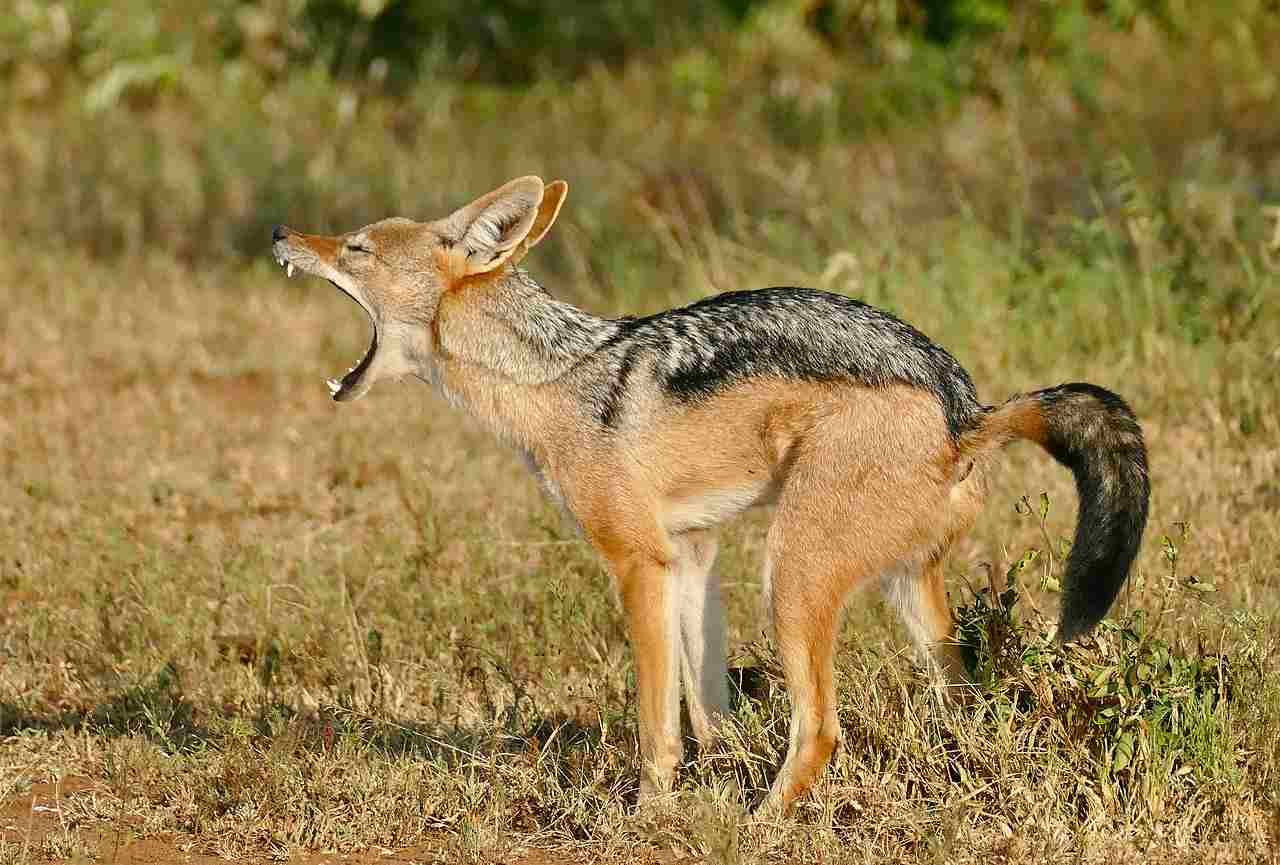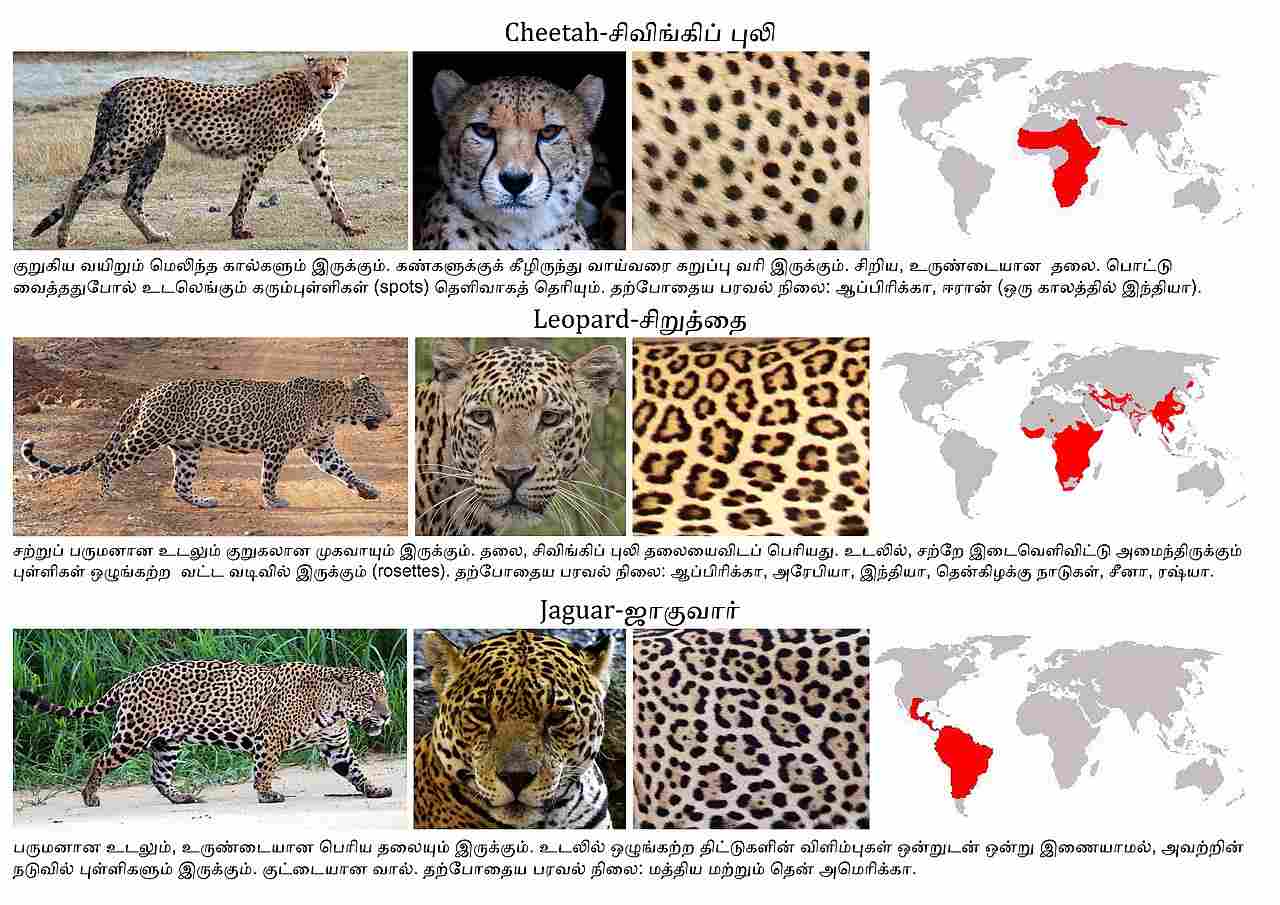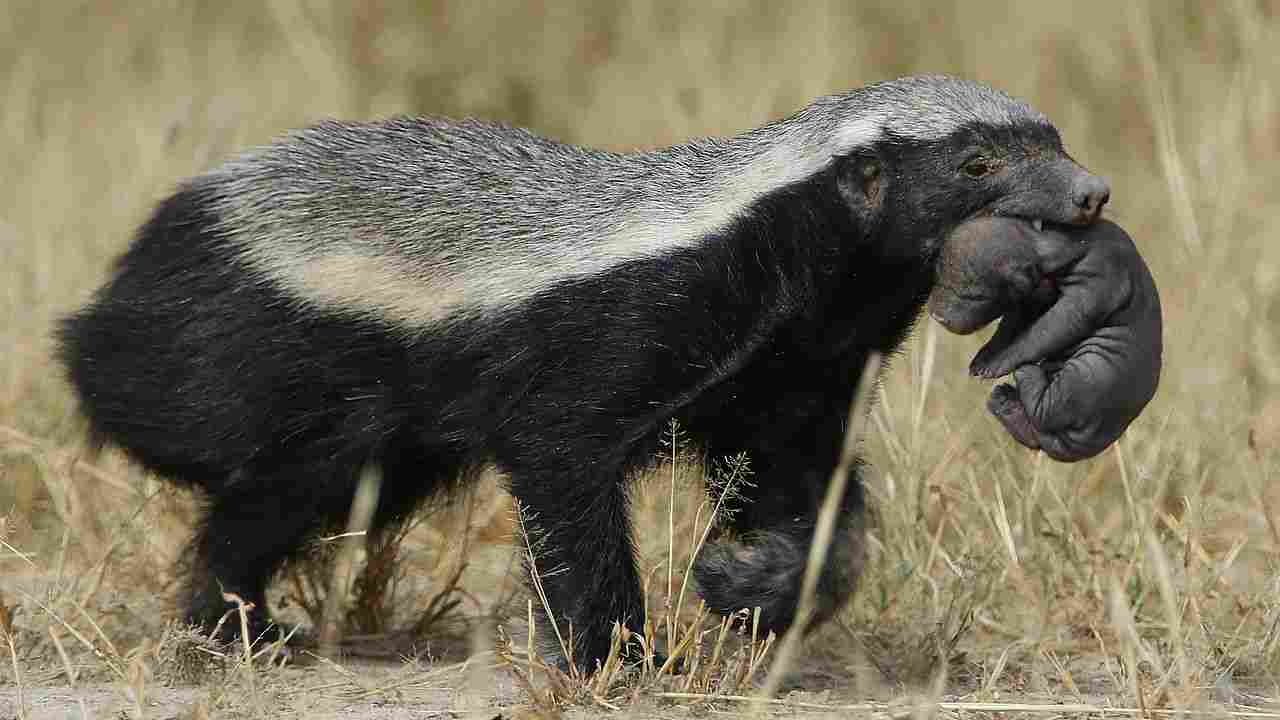Hyena Vs Jackal Size, Weight, Ecological Comparison
The hyena will overpower and kill a jackal in a physical confrontation, due to its larger size, greater weight, and overall superior strength as a predator.
In this article, we will compare these two predators and explore the various aspects that contribute to the hyena’s advantage. From taxonomy to behavior, we will delve into the characteristics that make the hyena a formidable opponent for the jackal.
Reasons Why a Hyena Will Win a Jackal In a Fight/Physical Confrontation
I). Size and Weight Advantages
One of the main reasons why a hyena would win in a fight against a jackal is its size and weight advantage. Hyenas are significantly larger and heavier than jackals, giving them a physical advantage in confrontations. A typical hyena can weigh up to 190 pounds, while a jackal usually weighs around 30 pounds. This stark difference in size and weight allows hyenas to overpower jackals with ease.
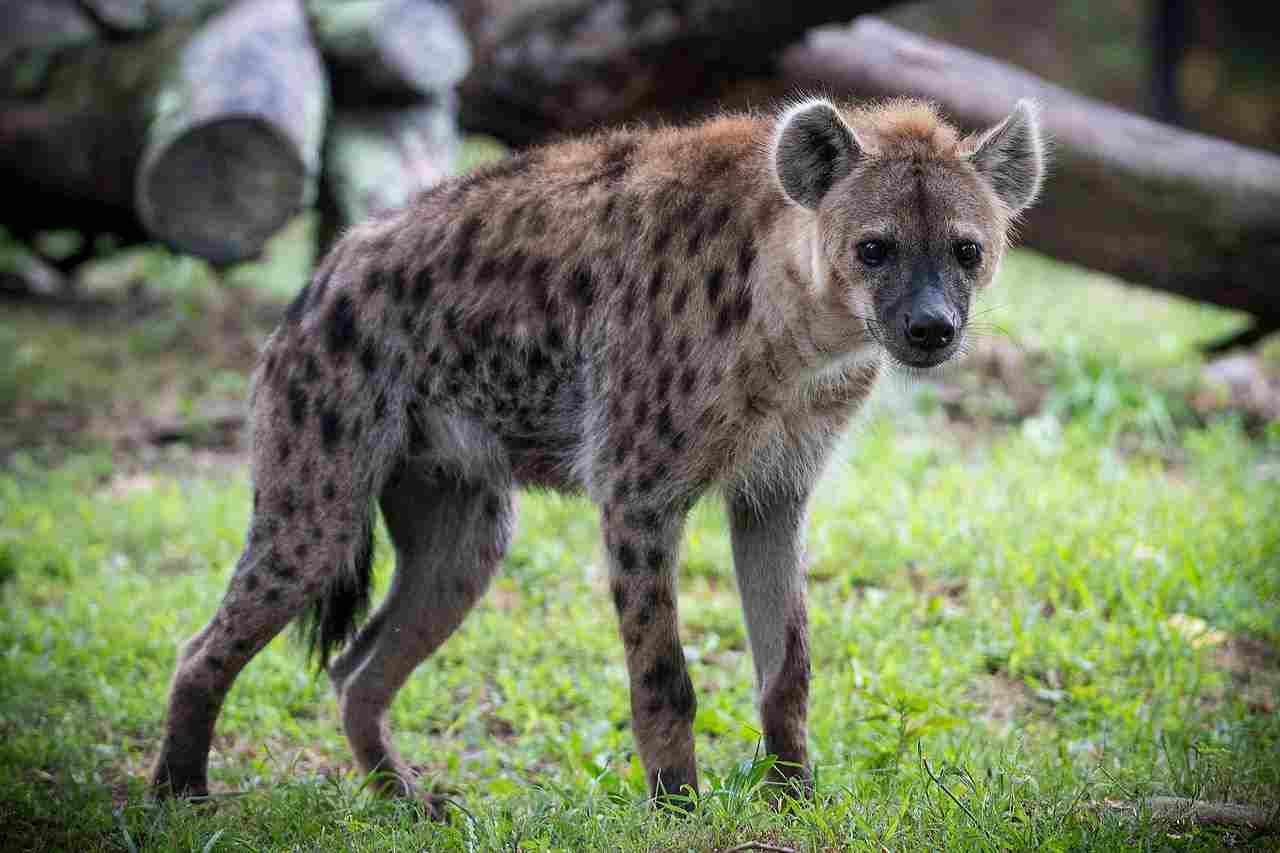
II). Superior Strength and Predatory Capacity
In addition to their size advantage, hyenas also possess superior strength and predatory capacity compared to jackals. Hyenas have a robust build with powerful muscles, enabling them to deliver strong and forceful attacks. Their jaws are incredibly strong, allowing them to crush bones and tear through tough flesh. On the other hand, jackals have a more slender build and less powerful jaws, making them less capable of inflicting significant damage.
Hyenas are also known for their pack hunting behavior, which gives them an advantage over jackals. They work together in coordinated attacks, overpowering their prey through sheer numbers and strategic planning. This pack mentality allows hyenas to take down larger and more formidable opponents, including jackals.
Therefore, the hyena’s size, weight, superior strength, and predatory capacity make it the clear winner in a fight or physical confrontation with a jackal. The hyena’s physical advantages, combined with its pack hunting behavior, give it a significant edge over the smaller and less powerful jackal.
*Details of Comparison
1). Taxonomy
The taxonomy of hyenas and jackals reveals interesting differences between these two species. Hyenas belong to the genus Crocuta, with the spotted hyena (Crocuta crocuta) being the most well-known species. On the other hand, jackals are part of the genus Canis, with the golden jackal (Canis aureus) being one of the most widespread species.
In terms of their classification, hyenas and jackals are both members of the family Canidae, which includes dogs, wolves, and foxes. However, hyenas are not true canids but are instead classified in their own subfamily, Hyaeninae. This distinction highlights the unique evolutionary path that hyenas have taken.
When comparing the two animals, it is clear that their taxonomic differences extend beyond their genus and subfamily. Hyenas are larger and more robust than jackals, with a distinct body structure and skull shape. Jackals, on the other hand, have a more slender build and resemble small wolves or foxes.
2). Appearance
Hyenas have a coarse and shaggy coat, which is usually spotted or striped, depending on the species. This unique pattern provides them with effective camouflage in their natural habitats. On the other hand, jackals have a smoother and shorter coat, often in shades of brown or gray, allowing them to blend into their surroundings as well.
In terms of stature and build, hyenas are much larger and more robust compared to jackals. Hyenas have a stocky and muscular body, with a sloping back and powerful forelimbs. Their front legs are longer than their hind legs, giving them a distinctive appearance. In contrast, jackals have a more slender build, resembling small wolves or foxes. They have a straight back and proportionate limbs, which enable them to move swiftly and with agility.
When comparing the appearance of these two animals, it is evident that hyenas possess a more intimidating and formidable presence due to their size and muscular build. Their unique coat patterns also contribute to their distinct appearance. On the other hand, jackals have a sleeker and more agile appearance, allowing them to navigate through various terrains with ease.
3). Size
When comparing the size of hyenas and jackals, it is clear that hyenas are significantly larger than jackals. Hyenas have a total body length ranging from 3 to 5 feet, depending on the species, while jackals typically measure around 2 to 3 feet in length. In terms of height at the shoulders, hyenas stand at around 2 to 3 feet, whereas jackals are slightly shorter, ranging from 1 to 2 feet.
The size difference between these two animals is quite substantial, with hyenas being much bulkier and more imposing in appearance. Their larger size gives them an advantage in physical confrontations and allows them to take down larger prey. On the other hand, jackals’ smaller size enables them to be more agile and maneuverable, making them adept at hunting smaller prey and navigating through various terrains.
Hyenas are larger in size compared to jackals, with a longer total body length and taller height at the shoulders.
4). Weight
When comparing the weight of hyenas and jackals, there is a noticeable difference between the two species. Hyenas are significantly heavier than jackals, with adult hyenas weighing between 90 and 190 pounds, depending on the species. In contrast, jackals weigh much less, typically ranging from 15 to 35 pounds.
The weight advantage of hyenas plays a crucial role in their ability to dominate in physical confrontations. Their larger size and weight give them more power and strength, allowing them to overpower their prey and defend themselves against potential threats. This advantage is particularly evident when hyenas scavenge for food, as their weight allows them to intimidate other predators and claim the carcass for themselves.
On the other hand, the lighter weight of jackals provides them with increased agility and speed. This allows them to navigate through various terrains more efficiently and chase down smaller prey with ease. Their lighter build also enables them to evade larger predators and escape dangerous situations more effectively.
5). Speed and Agility
When comparing the speed and agility of hyenas and jackals, there are distinct differences between the two species. Hyenas, despite their larger size and weight, are surprisingly agile and can reach speeds of up to 37 miles per hour. Their long legs and powerful muscles enable them to chase down prey and maneuver through various terrains with relative ease. This speed and agility give hyenas an advantage when it comes to hunting and capturing their prey.
On the other hand, jackals are known for their exceptional speed and agility. They are incredibly fast runners and can reach speeds of up to 40 miles per hour. Their slender build and lightweight allow them to swiftly navigate through dense vegetation and pursue smaller prey. Jackals’ agility is further enhanced by their ability to change direction quickly, making them adept at evading larger predators and escaping dangerous situations.
While both hyenas and jackals possess impressive speed and agility, their different body structures and hunting strategies contribute to their abilities. Hyenas rely on their endurance and strength to chase down larger prey, while jackals utilize their speed and agility to outmaneuver and capture smaller prey.
6). Bite Force
When comparing the bite force of hyenas and jackals, there are notable differences between the two species. Hyenas possess an incredibly powerful bite, with an average bite force of around 1,100 pounds per square inch (psi). This impressive bite force allows hyenas to crush bones and tear through tough hides, enabling them to access the nutrient-rich marrow inside bones. It is a crucial adaptation that aids in their scavenging and hunting behaviors.
On the other hand, jackals have a relatively weaker bite force compared to hyenas, with an average bite force of around 400 psi. While not as strong as hyenas, jackals’ bite force is still formidable enough to capture and kill their prey efficiently. Their sharp teeth and strong jaws enable them to deliver precise and lethal bites to their target.
The difference in bite force between hyenas and jackals can be attributed to their distinct feeding habits and ecological roles. Hyenas, being larger and more specialized scavengers, require a powerful bite to access and consume carcasses effectively. In contrast, jackals, being smaller and primarily opportunistic hunters, rely on their agility and speed to capture smaller prey, which may not require as much bite force.
7). Overall Physical Capacity (Which is Stronger?)
When comparing the overall physical capacity of hyenas and jackals, it becomes evident that the hyena is stronger than the jackal. This strength is attributed to several factors, including their larger size, heavier weight, and greater muscle mass.
Hyenas are significantly larger than jackals, with an average weight ranging from 90 to 190 pounds, while jackals typically weigh between 15 to 35 pounds. This size difference gives hyenas a clear advantage in terms of physical strength and power.
In addition to their size, hyenas possess a greater amount of muscle mass compared to jackals. This increased muscle mass enables hyenas to exert more force and perform physically demanding tasks such as hunting and scavenging. Their robust build and powerful limbs contribute to their overall physical capacity.
In the case of a violent confrontation between a hyena and a jackal, the hyena’s superior physical strength would likely result in the defeat or even death of the jackal. The hyena’s larger size, heavier weight, and greater muscle mass would give it a significant advantage in terms of overpowering its opponent.
Therefore, when considering the physical capacity of hyenas and jackals, it is clear that hyenas possess a greater strength and power due to their larger size, heavier weight, and greater muscle mass.
8). Habitat
Hyenas are primarily found in sub-Saharan Africa, with some species also inhabiting parts of the Middle East and India. They are well-adapted to a wide range of habitats, including savannas, grasslands, woodlands, and even deserts. Hyenas are highly adaptable and can thrive in both open and closed habitats, making them versatile predators and scavengers.
On the other hand, jackals have a more extensive geographic range, with species found in Africa, Asia, and Europe. They are commonly found in open grasslands, scrublands, and semi-desert regions. Jackals are known for their ability to adapt to various habitats, including forests, mountains, and even urban areas. Their adaptability allows them to exploit different food sources and survive in diverse environments.
When comparing the habitat preferences of hyenas and jackals, it is clear that both species have the ability to thrive in a variety of ecosystems. However, hyenas are more specialized in their habitat requirements, while jackals exhibit a broader range of adaptability.
9). Lifespan
Hyenas have a relatively long lifespan compared to jackals, with an average lifespan of 12 to 25 years in the wild. Some captive hyenas have even been known to live up to 40 years. This longer lifespan can be attributed to their social structure and cooperative hunting behavior, which provides them with better protection and access to resources.
On the other hand, jackals have a shorter lifespan, with an average lifespan of 8 to 10 years in the wild. This shorter lifespan can be attributed to their solitary nature and the challenges they face as opportunistic predators. Jackals often have to compete with larger predators for food and territory, which can increase their risk of injury and mortality.
Therefore, the longer lifespan of hyenas can be seen as an advantage in terms of reproductive success and the passing on of genetic traits. Their social structure and cooperative behavior contribute to their ability to thrive and survive in their respective habitats. In contrast, the shorter lifespan of jackals reflects the challenges they face as solitary predators in a competitive environment.
10). Behavior
Firstly, in terms of feeding behavior, hyenas are known for their scavenging habits, often stealing kills from other predators. They have powerful jaws and can consume bones and tough hides, allowing them to exploit a wide range of food sources. On the other hand, jackals are more opportunistic hunters, relying on their speed and agility to catch small prey such as rodents and birds.
In terms of aggression, hyenas are highly territorial and will fiercely defend their territories from intruders. They are known for their loud vocalizations, which serve as a warning to other animals to stay away. Jackals, on the other hand, are more solitary and less aggressive, preferring to avoid conflict whenever possible.
Social behavior also differs between the two species. Hyenas live in large, complex social groups called clans, where individuals have specific roles and hierarchies. They engage in cooperative hunting and share resources within the group. Jackals, on the other hand, are more solitary and form small family groups consisting of a breeding pair and their offspring.
When it comes to parenting, hyenas exhibit a matriarchal society, with females dominating the social structure. They are responsible for raising the young and teaching them essential hunting and survival skills. Jackals, on the other hand, share parenting responsibilities between the male and female, with both taking part in raising their offspring.
Therefore, the behavior of hyenas and jackals differs significantly. Hyenas are scavengers with powerful jaws, territorial aggression, and complex social structures. Jackals, on the other hand, are opportunistic hunters, less aggressive, and more solitary in nature.
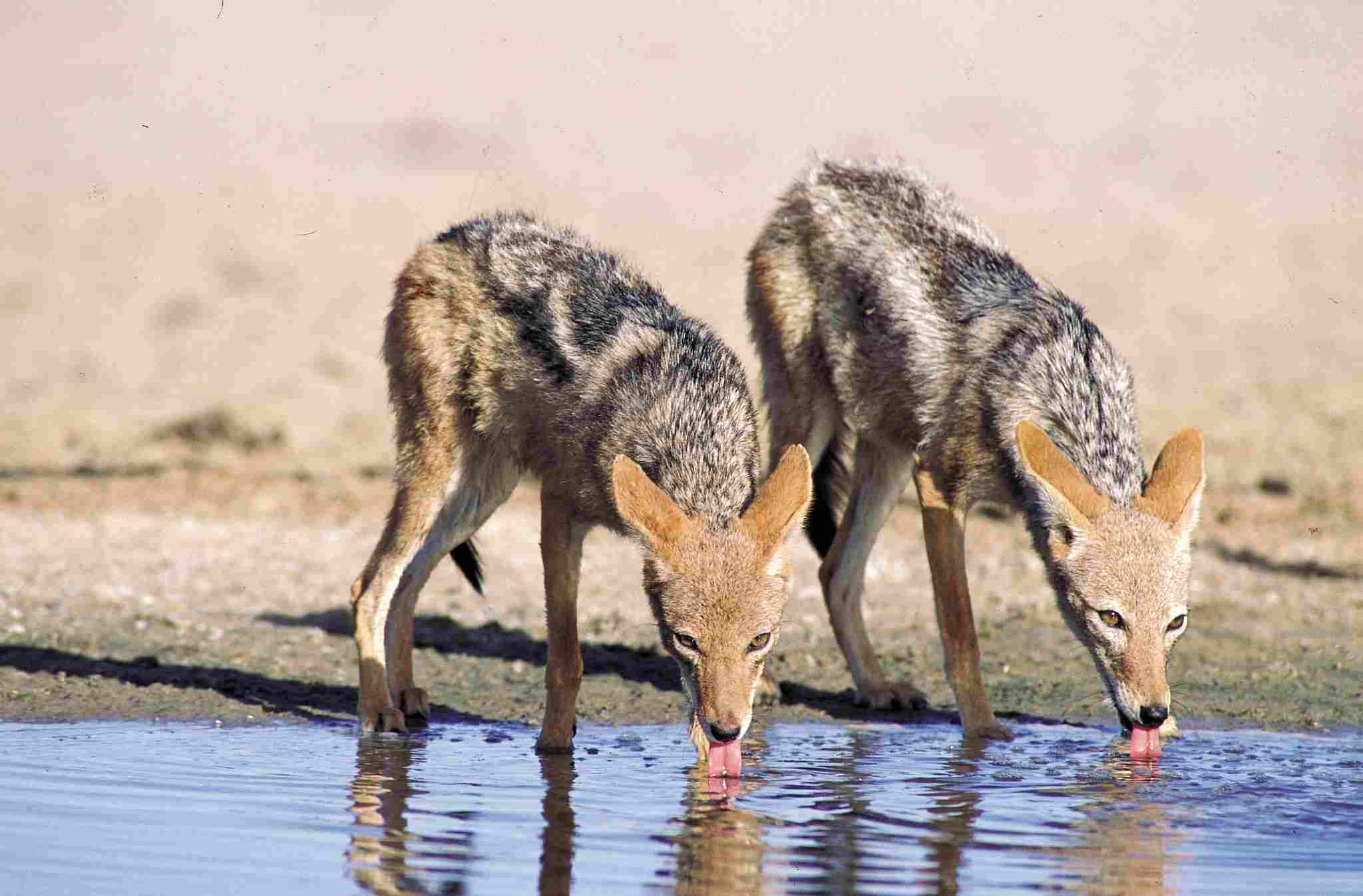
11). Reproduction
Hyenas and jackals have different reproductive strategies. Hyenas are viviparous, meaning they give birth to live young. The gestation period for hyenas is around 110 days, and they typically give birth to one or two cubs at a time. The cubs are born with their eyes open and are able to walk shortly after birth. In contrast, jackals are also viviparous, but their gestation period is shorter, lasting around 60 days. Jackals usually give birth to three to six pups in a litter.
When comparing the reproductive abilities of hyenas and jackals, it is important to note that hyenas have a higher reproductive potential due to their larger litter size and longer gestation period. This allows them to maintain stable populations even in harsh environments. Jackals, on the other hand, have smaller litters and a shorter gestation period, which may make them more vulnerable to fluctuations in population size.
12). Danger Posed to Humans
Hyenas and jackals have different levels of danger posed to humans. While both animals can come close to human settlements, hyenas are generally considered to be more dangerous. This is primarily due to their aggressive nature and powerful bite force. Hyenas have been known to be involved in attacks on humans, especially in areas where their natural prey is scarce. Their powerful bite force can cause serious injuries.
On the other hand, jackals are generally less aggressive towards humans. They are more likely to avoid human contact and prefer to stay away from populated areas. Jackals are opportunistic scavengers and are more likely to feed on garbage or carrion rather than directly confront humans.
In terms of the rate of human deaths caused by these animals, hyenas pose a higher risk compared to jackals. However, it is important to remember that both species generally avoid human confrontations and attacks on humans are rare occurrences.
If you encounter a hyena or jackal in the wild, it is important to exercise caution. Keep a safe distance and avoid approaching or cornering the animal. Make loud noises or throw objects to scare them away. It is also advisable to travel in groups and avoid walking alone at night in areas where these animals are known to inhabit.
Therefore, while both hyenas and jackals can come close to human settlements, hyenas pose a higher risk due to their aggressive nature and powerful bite force. However, attacks on humans by both species are rare, and taking necessary precautions can help minimize any potential danger.
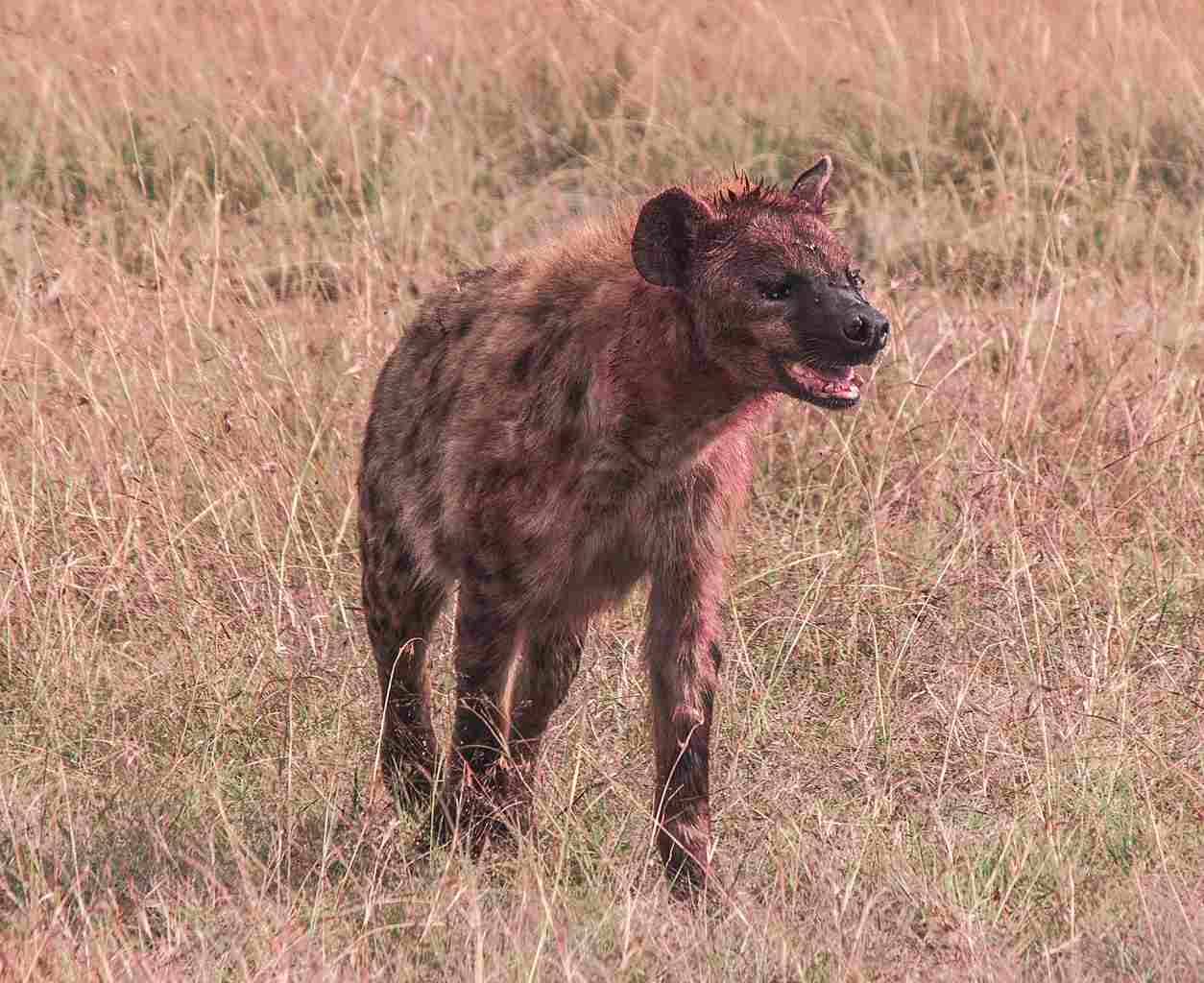
13). Intelligence
When comparing the intelligence of hyenas and jackals, it is important to consider their respective behaviors and problem-solving abilities. Both animals exhibit a level of intelligence that allows them to survive and thrive in their environments.
Hyenas are known for their complex social structures and cooperative hunting strategies. They have a high level of social intelligence, which enables them to communicate effectively within their clans. This intelligence is crucial for successful group hunting and defending their territories.
On the other hand, jackals are highly adaptable and resourceful animals. They possess a keen sense of smell and excellent hearing, which aids them in locating food sources and avoiding predators. Their intelligence lies in their ability to navigate different environments and find opportunities for survival.
While both hyenas and jackals display intelligence in their own ways, it is difficult to determine which species is more intelligent. Their intelligence is specialized for their specific ecological niches and survival strategies. Hyenas rely on their social intelligence, while jackals rely on their adaptability and resourcefulness.
14). Tracks
When comparing the tracks of hyenas and jackals, there are distinct differences that can help identify which animal has passed through an area. Hyena tracks are larger and more robust, with a distinct pad shape and claw marks. Their tracks often show a clear imprint of the toe pads and can measure up to 4 inches in diameter. On the other hand, jackal tracks are smaller and more delicate, with a narrower pad shape and less prominent claw marks. Their tracks typically show a clear imprint of the toe pads and can measure up to 2 inches in diameter.
These differences in track size and shape can be attributed to the variations in the animals’ physical characteristics. Hyenas are larger and heavier than jackals, which is reflected in the size and depth of their tracks. Additionally, hyenas have a more powerful build and a wider gait, resulting in tracks that are more spread out and deeper in the ground.
By analyzing the tracks left behind, researchers and wildlife enthusiasts can gain valuable insights into the presence and behavior of hyenas and jackals in a particular area. The size and shape of the tracks can indicate the animal’s size, weight, and movement patterns. This information can be useful for tracking populations, studying their behavior, and understanding their ecological roles.
15). Conservation Status
When it comes to the conservation status of hyenas and jackals, there are significant differences between the two species. Hyenas, particularly the species found in African, are classified as “near threatened” or “least concern” on the IUCN Red List. This means that their populations are relatively stable and not currently at risk of extinction. On the other hand, jackals, such as the golden jackal, are also classified as “least concern” or “of least concern.” However, some specific populations of jackals, like the Ethiopian wolf, are considered “endangered” due to habitat loss and human-wildlife conflict.
The main threats to the survival of wild hyena populations include habitat loss, human persecution, and competition with other predators. Hyenas often face persecution from humans due to their reputation as scavengers and their association with death and superstitions. Additionally, habitat loss and fragmentation due to human activities, such as agriculture and urbanization, can limit their range and access to resources.
For jackals, the main threats to their survival include habitat loss, hunting, and persecution. Jackals are often hunted for their fur, which is used in the fur trade, and they are also targeted by farmers due to their predation on livestock. Habitat loss and degradation, primarily due to agricultural expansion and urban development, further threaten their populations.
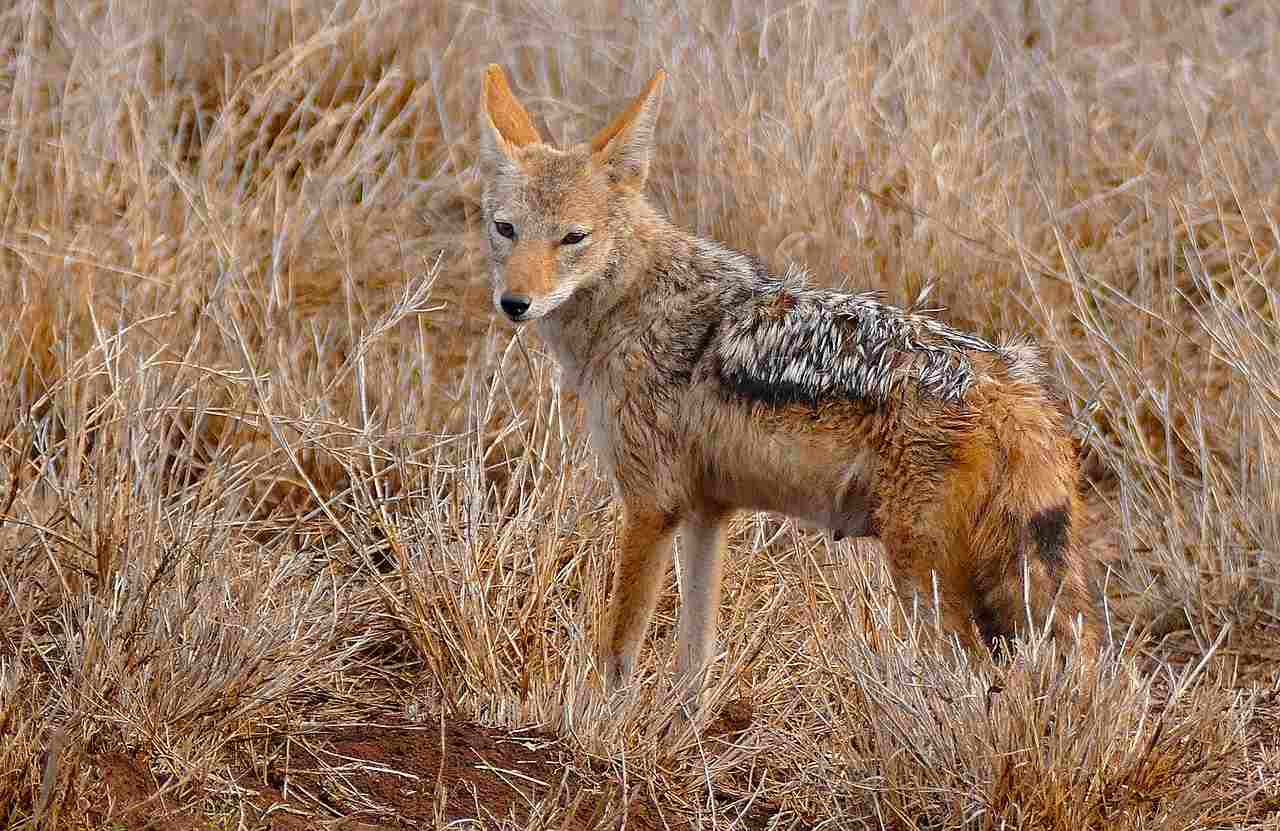
Conclusion
The comparison between hyenas and jackals reveals both similarities and differences in various aspects.
I). SIMILARITIES
Both hyenas and jackals belong to the same family, Canidae, and share certain physical characteristics such as sharp teeth and keen senses. Additionally, they are both carnivorous predators that play important roles in their respective ecosystems.
II). DIFFERENCES
Despite their similarities, there are notable differences between hyenas and jackals. Hyenas are larger and more robust in size compared to jackals. They have a stronger bite force and are known for their scavenging behavior. On the other hand, jackals are smaller and more agile, with a slender build that allows them to navigate through various terrains. They are primarily hunters and have a different ecological niche compared to hyenas.
In terms of conservation status, hyenas are generally classified as “near threatened” or “least concern,” while specific populations of jackals, like the Ethiopian wolf, are considered “endangered.” The main threats to hyenas include habitat loss, human persecution, and competition with other predators. Jackals, on the other hand, face threats such as habitat loss, hunting, and persecution by farmers.

